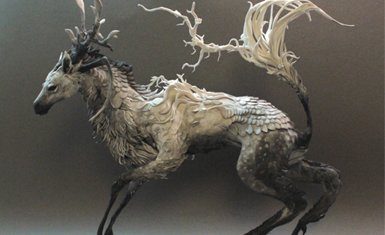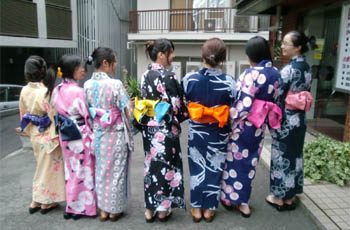Meiji Jingu Temple, an example of a Shinto shrine
The shinto shrines are places where they live and are worshiped kami, the divinities of Shintoism. The sacred objects that represent the kami they are kept in the innermost room of the sanctuary, where they cannot be seen by outsiders.
Shinto shrines continue to play an important role in the japanese society. Although the population does not profess a particular religion, many elements of the Shinto religion are present in daily life in Japan.
Toshogu Temple
People visit shrines to show their respect for the kami or say a prayer for good luck. The shrines are also visited at special events such as the new year, the setsubun, the shichigosan and other festivals. Newborn children are brought to the sanctuary a few days after their birth, and some couples even have their wedding in the sanctuaries.
Important elements of Shinto shrines
Torii (鳥 居): One or more bows can be found torii at the entrance of a sanctuary. They come in various colors and materials. Most of the torii however, they are made of wood and painted orange and black. They serve to separate the mundane world from the spiritual world.
Komainu (狛 犬): They are lions or guard dogs that are on each side of the entrance. In the case of the Inari shrines they are foxes.

Purification trough: Near the entrance, the water from these sources is used for purification. You should clean your hands and mouth before approaching the main room.
Main Offering Hall: Depending on the architectural style, the main hall (honden) and the offering room (haiden) are two separate buildings or are combined into one space. The main room is the innermost and contains the sacred objects, while visitors make their prayers and offerings in the offering room.
Stage: You can find scenarios for presentations of noh Y bugaku.
Ema (絵 馬): Visitors can write their wishes on wooden plaques and hang them in the shrine in the hope that their wishes will come true. Many people want things like health, business success, passing an entrance exam, love, or wealth.
Omikuji (お み く じ): The omikuji they are strips of paper that predict fortune and are found in many shrines and temples. They are written randomly and contain predictions ranging from daikichi (Great fortune) to daikyo (Very bad fortune). By tying this piece of paper to a tree you can make good luck come true or avoid bad luck.
Shimenawa (注 連 縄): The shimenawa It is a string from which several strips of zigzag paper hang known as shide. This represents the demarcation of the sacred, and can be found in arches torii, and in trees and stones that are considered sacred. A rope similar to shimenawa It is used by the yokozuna, the highest ranked sumo wrestlers.
Also in some temples you can find additional buildings such as the priest’s house, his office or warehouses for festivals. However, the cemeteries are not usually found in shrines, as death is considered impure and rather the funeral services are provided by Buddhist rites.
The architecture of the Shinto shrines and Buddhist temples It has been mixed for centuries. Thus, you can find constructions with various styles. A few shrines in Japan are considered purely Japanese, and many of them were influenced by Chinese or Korean architecture.
If you plan to visit a Shinto shrine follow the following instructive.


